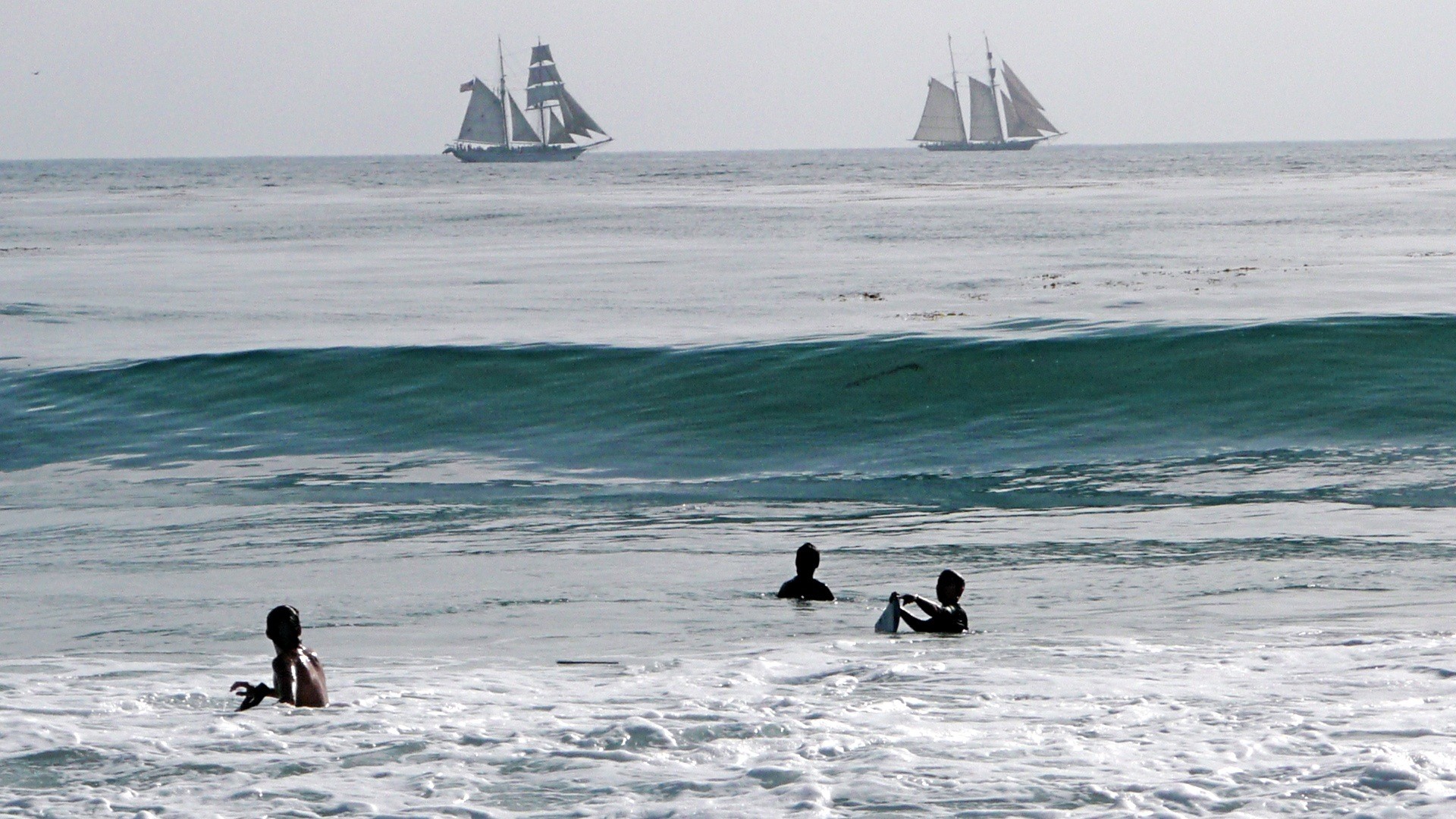
In California, there’s a deep connection between bona-fide scientific research and the policy decisions that directly affect our coastline. The recently released “The State of the California South Coast”—a 60-page, full-color report compiled by ocean scientists from data collected by pros and amateurs—details the baseline condition of the state’s 5-year-old Marine Protected Areas (MPAs) from Point Conception to the Mexican border.
On March 23 at the Holiday Inn Express in San Clemente, editors of the report—which was published by California’s Department of Fish and Wildlife, Ocean Protection Council, and Ocean Science Trust—shared highlights of the findings with the public, easily half of whom worked in commercial fishing. In 2011, the state issued a call for projects, funding 10 investigations that were led by academic researchers and utilized students, volunteers, anglers, divers, remotely operated vehicles exploring inhuman depths and crevices, even airplanes. Covering ecology and socioeconomics, the baseline provides state environmental agencies with a benchmark for all future resource-management decisions. (The data for the entire state’s MPA network, and the decisions that result from ongoing monitoring, are available on OceanSpaces.org.)
While the baseline’s purpose is to capture a snapshot of how things are, it’s too early to know if the MPAs are working, but older protected areas, established before the Marine Life Protection Act (MLPA) was implemented, are showing positive trends: The California Spiny Lobster increased in number and mass in the Channel Islands. And during the data collection, a larger percentage of legal-weight lobsters were observed in the Laguna Beach MPA.
“We just had the biggest El Niño ever, so more lobster caught means nothing—we’re bleeding here,” said Dave Hansen, a charismatic, second-generation boat captain based in San Clemente who was among the several boat captains and management of Dana Wharf Sportfishing, members of the Oceanside Anglers Club, and assorted old salts in attendance. “Is it ever going to open again? We thought after five years, we’d get some [of the Laguna Beach MPA] back. I’ve got kids that need to eat.”
But Hansen didn’t speak for everyone in the room. “It only covers 75 percent of Laguna,” said Mike Bearnan, who helped to create the Laguna Beach MPA. “I grew up in a fishing family. Laguna is the best place to grow in the ocean—I know, it’s painful to lose a favorite fishing spot.”
While one of the MPLA’s goals is sustaining marine life, including those of economic value, statewide data collection does much more: tracking the multiple effects of climate change and invasive species, as well as emergency events such as oil spills and the nearly overnight disappearance of sea stars. With monitors already in place, the response to the Refugio Oil Spill near Santa Barbara in 2015 was immediate, and data collection continues to measure its impact and keeps decision-makers informed on recovery efforts.
“As we move into Phase 2 [creating an action plan], [there will be] opportunities to be involved in a tangible way,” said Cyndi Dawson of the Ocean Protection Council, hoping to reassure Hansen and others. “In the next three or four months, a party boat project will make its way down to your region.”
Dawson was referring to the California Collaborative Fisheries Research Program (CCFRP), which has been operating since 2006 in the Central Coast region. According to CCFRP director Rick Starr, an alliance of conservation organizations catch, tag and release fish inside and near the MPAs. Because the fishing industry has taken such a financial hit, it’s crucial to state agencies that it be involved in evaluating MPAs.
“And the state is putting its money where its mouth is,” said Dawson. “We’re now finishing a grant to expand [CCFRP] statewide to mimic what they’ve been doing in the central coast for 10-plus years.”
Fishing-boat operators will collaborate with researchers from the get-go, deciding together the sites to fish, the gear used, etc., so the “fishermen are confident in the veracity of the results,” said Dawson, an MPA policy adviser and a co-editor. “That high-quality data is a huge benefit to both sides. Researchers benefit from hours and hours on the water with local party boat operators, who’ve been fishing on those waters for maybe 30 years.”
In the current era of budget slashing for anything reeking of conservation, Dawson assured the crowd that funding was solid through 2027, with a current budget line item of $2.5 million.
While mostly state-funded, partners in creating the baseline included two federally funded entities out of Scripps. But the Ocean Science Trust’s Erin Meyer said that although science defunding will be drastic, weather-related work likely wouldn’t suffer brutal cuts. The commitment to effectively manage the vast network of organizations involved resulted in a multi-agency leadership team whose ultimate goal is a healthier ocean through cooperative efforts.
Near the end of the Q&A session, Hansen told the scientists he has also been giving talks. “[I] don’t know why they want to listen to me. . . . Hey, we should do a talk together!”
We’ll see in the coming months what that spark of cooperation will mean for OC fishing.

Lisa Black proofreads the dead-tree edition of the Weekly, and writes culture stories for her column Paint It Black.

